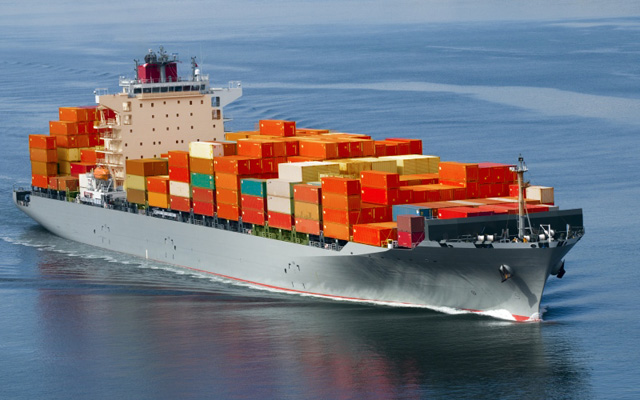Further widening of the supply-demand imbalance at the trade route level and insufficient measures to reduce ship capacity will lead to an acceleration of freight rate reductions and industry-wide losses in 2016, according to the latest Container Forecaster report published by global shipping consultancy Drewry.
The decline in global container shipping freight rates is anticipated to have been as great as 9% last year and Drewry is forecasting that carrier unit revenues will decline further in 2016, albeit at a slightly slower pace. Excluding 2009, the past 12 months has seen the lowest spot rates in most major trade lanes and all at the same time. This is not solely due to fundamental supply/demand imbalances caused by weak volumes and over supply.
End of year 2015 spot rates from Asia to the US West Coast and US East Coast were around $815 and $1,520 per 40ft container respectively. These were easily the lowest since 2009 and with decent cargo growth and load factors of over 90% to the US west coast, the rate deterioration emphasise that carriers have been fighting for market share and are positioning themselves further for the potential shifting of cargo from the West to the East Coast after the Panama Canal widening. Spot rates of below $200 per 40ft container in the Asia-North Europe trade during June 2015 were also unprecedented. While spot rates have staged a recovery since the start of 2016, Drewry believes that these gains will prove short-lived.
Many stakeholders point to the fact that bunker prices of for example $140 per tonne in Rotterdam (IFO380) are clearly contributing to lower overall container freight rates, but Drewry believes that a new and worrying trend has become apparent for ocean carriers. Our most recent data suggests that they are no longer able to cut costs faster than the prevailing declines seen in the freight rate market. Drewry believes that oil prices have probably hit the market bottom right now and costs for the positioning of empty containers and vessel lay ups will increase this year. Our latest calculation is that a 10,000 teu vessel would incur a minimum of $450,000 in reactivation costs if laid up in Asia for three months or more. It should also not be forgotten that many lines no longer even quote a BAF on some trade lanes. The consequence of this is that Drewry expects industry losses to widen to over $5bn in 2016.
Ocean carriers believe they have taken a great deal of corrective action during the final three months of 2015 in order to lift very low freight rates. But the removal of six major east-west services and the blanking of 32 voyages in November and 21 in December did relatively little to improve trade route supply/demand balances. At the beginning of October 2015, average headhaul east-west load factors were only 85%, compared to 94% one year earlier.
The GRI initiatives implemented in late 2015 did not work for carriers on many trade lanes and in some cases were suspended or postponed because conditions were simply too feeble. Drewry believes that more needs to be done by the industry to bring about any kind of stability. Proposed or forthcoming industry consolidation may well reduce the number of big market players and improve individual company efficiency, but this will not reduce industry vessel capacity in any way.
With the idle fleet touching one million teu in late 2015, or just under 5% of the global fleet, decisions need to be taken by lines to remove more vessels and re-structure more trade lanes with new operational agreements. Big vessels no longer guarantee decent profitability and should Asia to North Europe contract rates be signed at an average $900 per feu (and this could be too optimistic) for 2016, this equates to an estimated $1.4 billion loss for the carriers on one trade lane.
Neil Dekker, Drewry’s director of container research, said: “Comparisons are being made to 2009 when approximately 1.3 million teu was removed from a considerably smaller fleet. The mass scale lay ups were triggered by the fact that lines ran out of cash. The industry is not there yet as some lines are still making a profit and the very low fuel prices are propping them up. But a further two or three quarters of declining financial profitability may trigger a notable rise in the idle fleet as we enter the second half of 2016.”
Copyright Ships & Ports Ltd. Permission to use quotations from this article is granted subject to appropriate credit given to www.shipsandports.com.ng as the source.

